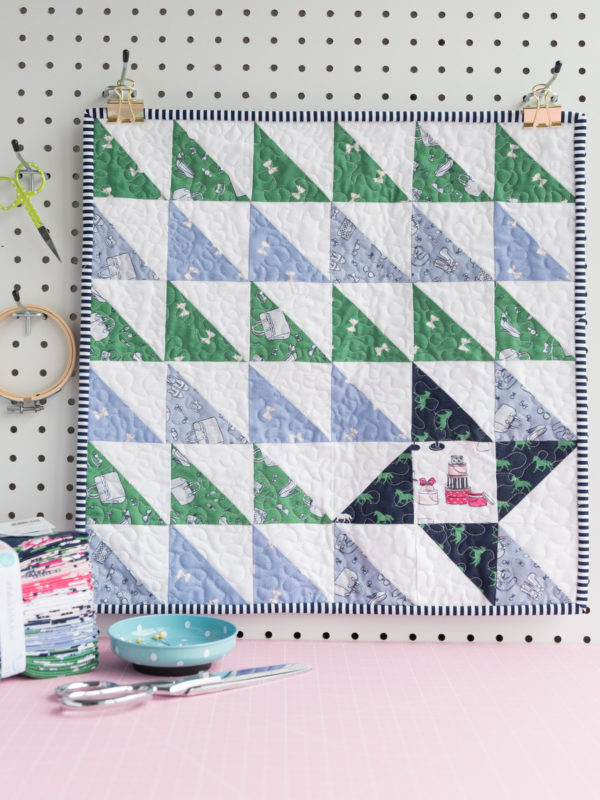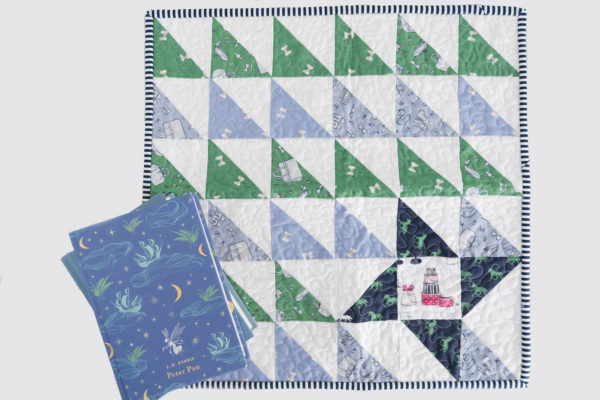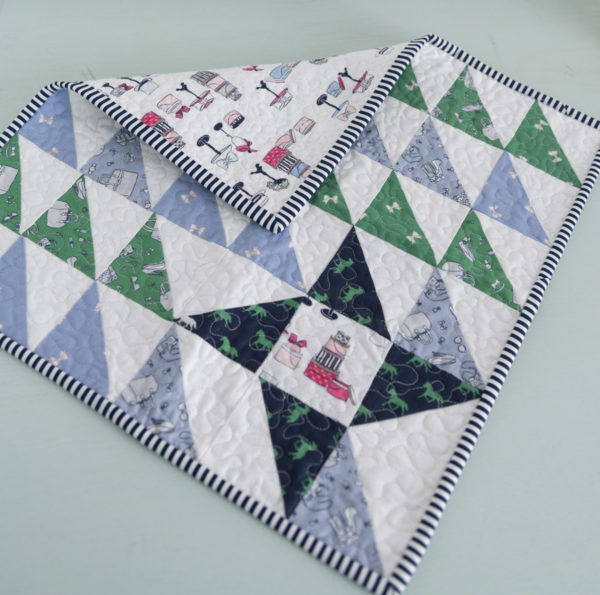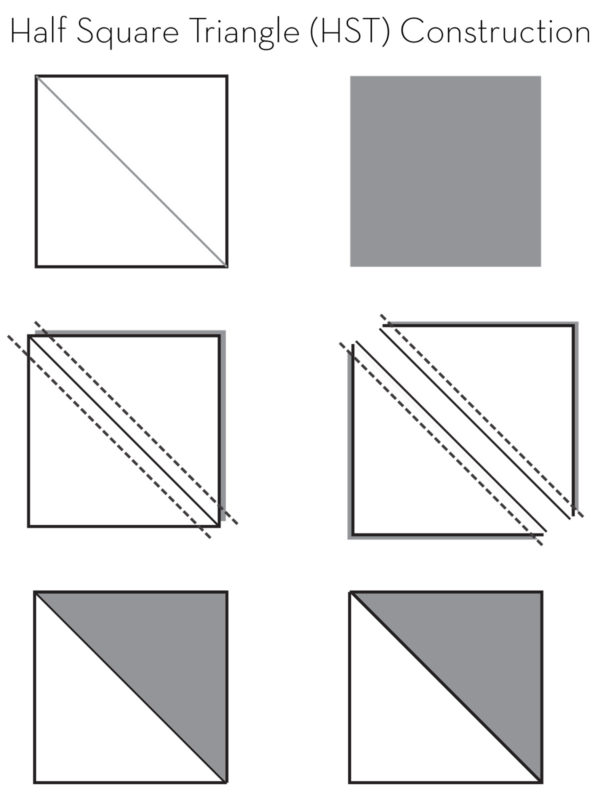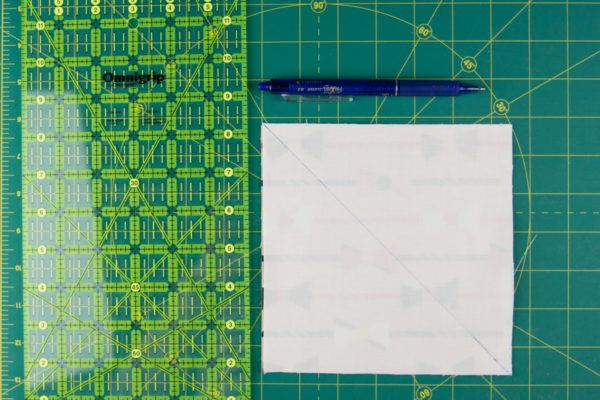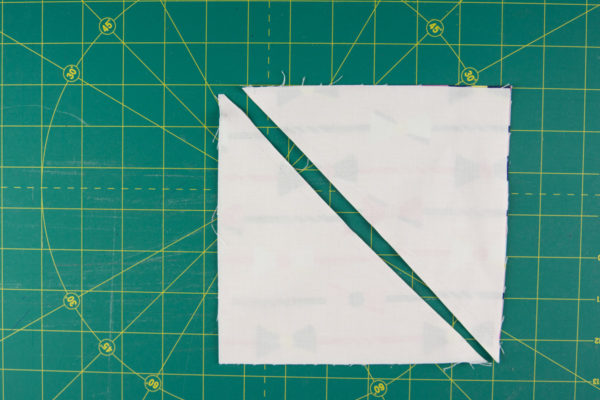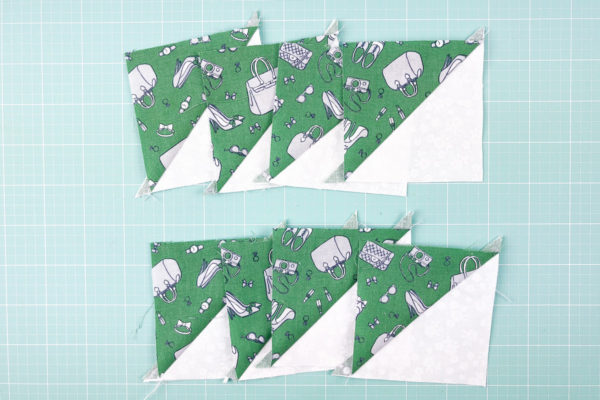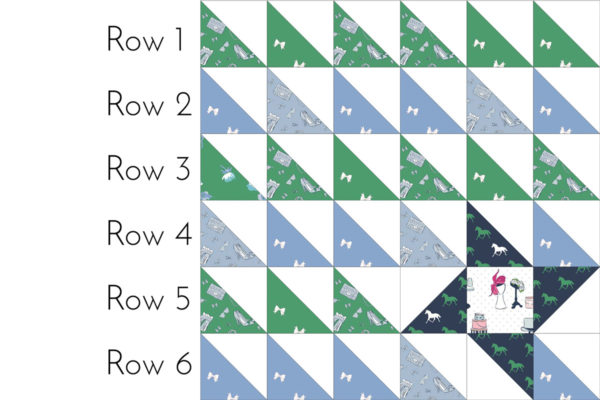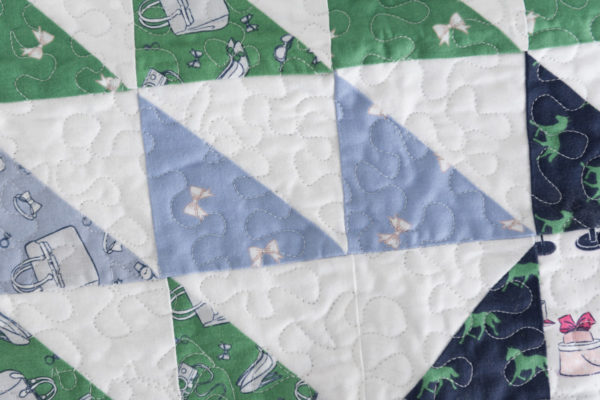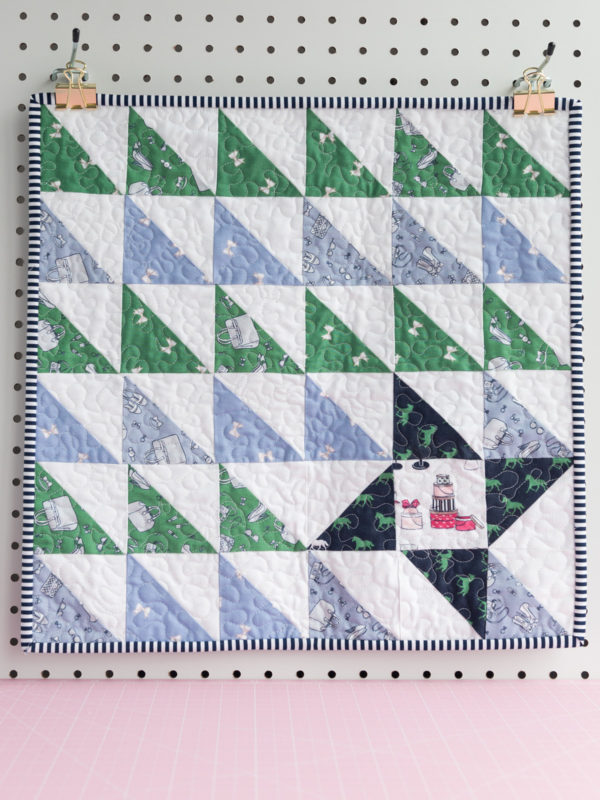Turning Triangles Mini Quilt
Hello! My name is Melissa Mortenson, I’m the girl behind the Polka Dot Chair blog, a fabric and pattern designer, and am so proud to be a BERNINA Ambassador!
I love to quilt, but sometimes I’m just not in the mood to tackle a really big project. A few years ago I made my first mini quilt and was instantly hooked! Why is everything so much cuter when it’s small? Mini quilts make great wall hangings, table toppers, and even place mats.
Today I’m going to walk you through making this fun Turning Triangles Mini Quilt. It’s constructed simply using a variety of half square triangles. I’ll even show you my favorite method for making half square triangles (referred to as HST’s). Are you ready to start?
Mini Quilt Measures Approx. 21″ x 21″
Materials to Make a Turning Triangles Mini Quilt
- 1-2 Fat Quarters of Green Fabric
- 1-2 Fat Quarters of Light Blue Fabric
- 1 Fat Quarter of Navy Fabric
- 1/4 Yard White Fabric
- 1 Fat Quarter for Backing
- 1/4 Yard for Binding
- Scrap of 100% Cotton Batting at least 23″ x 23″
- Basic Quilting Supplies
- Fabric Safe Marking Pen
- Sewing Machine, I use a B 770 QE
- Patchwork foot #97D
- Straight Stitch Plate
- BERNINA Stitch Regulator (BSR) Foot if Free Motion Quilting (note: you can also straight line quilt this mini using the Walking foot #50).
Cutting Directions
From Various Green Fabrics Cut:
8 pieces each 4″ x 4″
From Various Light Blue Fabrics Cut:
8 pieces each 4″ x 4″
From Navy Blue Fabrics Cut:
2 pieces each 4″ x 4″
From White Fabric Cut:
18 pieces each 4″ x 4″
From Novelty Print Cut:
1 piece 3 1/2″ x 3 1/2″
Step One: Create the Half Square Triangles (HST’s)
note: the photos below show squares larger than 4″ x 4″ to make it easier for you to see the technique. Regardless of the size of the squares, the technique is the same.
Begin by matching each color 4″ x 4″ square with one white 4″ x 4″ square. Place the pieces together, right sides facing.
Draw a diagonal line on the wrong side of the white background pieces using a fabric safe marking pen (I use Frixion Pens). With the white fabric and color fabric still together with right sides facing, stitch down each side of the marked line, exactly 1/4″ on each side of the center line.
Using your quilt ruler and rotary cutter, cut along the drawn line. You will have 2 pieces that look like the photo above. Press the pieces open with the seams going towards the darker fabric. Be careful not to distort the shape.
Since the fabric will distort as you sew and press it, it is necessary to square up and trim your HST blocks before you proceed. Trim, and square up each piece to 3 1/2″ x 3 1/2″.
Repeat this process until you have 15 white/green HST’s, 16 white/light blue HST’s and 4 white/navy HST’s. You will have one green/white HST left over.
Step Two: Assemble the Mini Quilt
The mini quilt contains 6 rows of 6 quilt blocks.
I like to assemble my quilts by rows, then stitch the rows together.
Begin by stitching the sewn HST’s together for row 1 together as shown in the diagram below. Stitch using a 1/4″ seam allowance. I like to use my 97D patchwork foot and Patchwork Seam guide to obtain a consistent 1/4″ seam allowance.
Stitch Row 2 together, followed by rows 3-6.
Press the seams of each row to one side. I like to press the seams of my odd rows to the left and my even rows to the right. This allows the seams to nest nicely with each other as the rows are sewn together.
Now all you need to do is sew the rows together. Stitch row 1 to row 2, and so on and so forth.
When you’re done give the whole mini a good pressing. Again, pressing the seams to one side.
Step Three: Finishing
Now that you have a completed quilt top, you need to turn it into an actual quilt. To do this you’ll need to create a “quilt sandwich” with your quilt top, batting, and backing fabric.
I always like to have my backing 4″ larger than my quilt top and my batting 2″ larger. That way I can see all of the layers when I’m putting the sandwich together.
Your sandwich will have the quilt top and quilt backing facing each other with right sides of the fabric out, and the quilt batting “sandwiched” between the two layers. There is a great tutorial here on WeAllSew that goes into this process in detail HERE.
Now all you need to do is the quilt and bind your mini using your favorite method.
I used my BSR foot and free motion quilted a small meander pattern on my quilt. If you’d like a great tutorial on using your BSR foot for free motion quilting you can check out this great post here on WeAllSew – it walks you through the steps of using your foot and offers some design tips as well. You could also straight line quilt if using your walking foot.
If you’d like to straight line quilt your mini instead, there are detailed directions HERE.
After you’ve quilted your mini, trim all the layers of the quilt even and bind as desired. I used 2 1/2″ wide binding.
Need help with binding? Check out this tutorial.
I hope you enjoyed this tutorial and are ready to make a mini quilt. Beware, they can be addicting!
